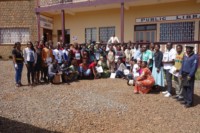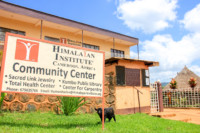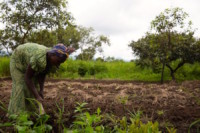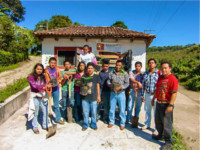Biofertilizer is a type of fermented liquid fertilizer that is packed with energy, nutrients, and beneficial microorganisms. A technique learned from local Energy Farming staff at the Himalayan Institute Mexico, this is now one of the core types of fertilizer promoted through the Energy Farming program in the US and Cameroon, as well. It utilizes readily available, mostly free, ingredients and results in a concentrated liquid that can be applied to crops using a backpack sprayer, in the same way that farmers are accustomed to applying chemical fertilizers.
Biofertilizer is prepared from a base of fresh cow manure dissolved in water and enriched with milk, molasses or cane sugar, ash, a little bit of natural charcoal and bread yeast. This mixture is fermented for many days in a plastic tank under anaerobic conditions (without the presence of oxygen).
Below, see a brief video narrated by HI Mexico General Manager, Geovanni Beristain.
The bottle of water allows gases produced by the fermentation process, mainly methane, to escape, while preventing oxygen from entering the chamber. The bubbles indicate that the fermentation process is well underway.
After approximately 90 days, the biofertilizer is ready. Like wine, biofertilizer can be stored and aged for additional months to increase its potency.
By composting organic materials with yeast, we are able to use the process of fermentation to accelerate the transformation of raw materials into a rich fertilizer. Unlike chemical fertilizers that add specific nutrients (like N, P and K) for plant uptake, biofertilizers act in large part by fostering microbial life on and in the plant and soil. Whereas chemical fertilizers lose efficacy over time and require higher and higher rates of application, as the microbiology in the ecosystem comes into balance and strengthens, less biofertilizer is needed.
Larger scale fermentation tanks, also called biogas digesters, are currently gaining in popularity throughout Latin America. In this system, the gas produced by fermentation is harvested and used as a cooking fuel. In the future, the Himalayan Institute may improve its tank model to incorporate this element, which would be especially advantageous in a community like Jonotla where everyone cooks either on open fires or gas-powered stoves. In the meantime, HI Mexico staff prepare to open up their first biofertilizer tank and put the rich fertilizer to good use on the demonstration farm.
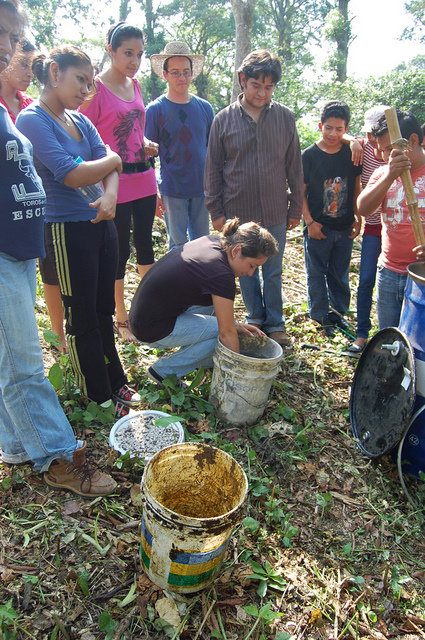
Students in the Sustainable Farming training program at HI Mexico mix ingredients for biofertilizer.


